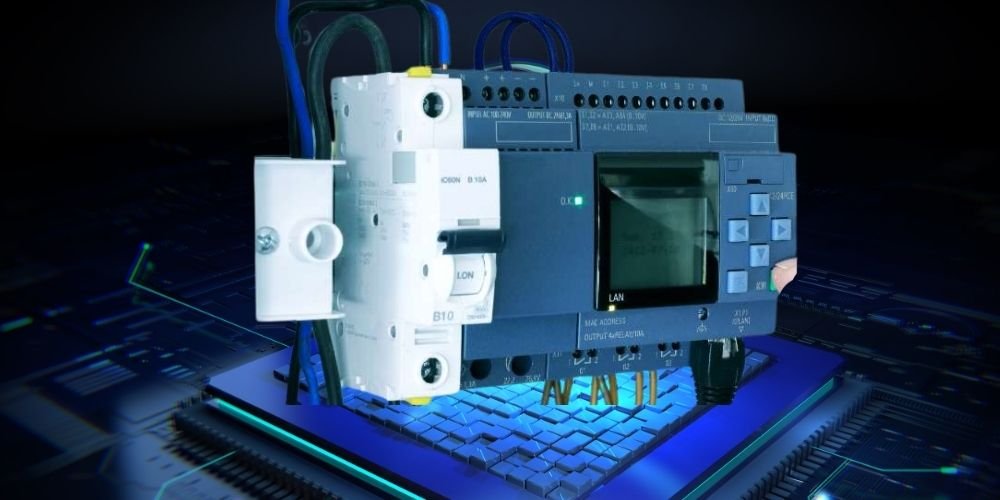Understanding the PLC Basis: A Beginner’s Guide to PLC Basics
In today’s industrial world, automation plays a central role in increasing productivity, efficiency, and safety. At the heart of most automation systems is the Programmable Logic Controller (PLC). Whether you’re a student, technician, or engineer, understanding the PLC basis is essential. This beginner-friendly guide will walk you through the PLC basics, covering what a PLC is, how it works, and where it’s used. Let’s start from the very beginning. PLC stands for Programmable Logic Controller. It is an industrial digital computer used to control machines, processes, and devices in real-time. Originally developed to replace complex relay control systems, PLCs are now widely used in manufacturing, energy, packaging, water treatment, and many other sectors. At its core, understanding the PLC basis means understanding how it receives inputs, processes logic, and controls outputs—all with high speed and reliability. Getting familiar with PLC basics is not only helpful for automation professionals but also crucial for anyone working in industrial environments. With industries rapidly shifting toward smart factories and Industry 4.0, PLC knowledge is more relevant than ever. To understand the PLC basis, let’s break down its working principle: The PLC receives data from input devices like: The PLC processes the input data using a pre-programmed logic written in a language such as Ladder Logic or Function Block Diagram. Based on the logic, the PLC sends signals to output devices like: This cycle—input, process, output—repeats continuously within milliseconds to ensure real-time control. As you dive into PLC basics, it's important to know the key hardware components of a PLC system: A key part of the PLC basis is its programming. PLCs are programmed using languages standardized by IEC 61131-3. The most commonly used languages are: For beginners, Ladder Logic is the best place to start when learning PLC basics. Now that you understand the PLC basis, it’s time to see where PLCs are commonly used: PLCs are used wherever reliable, automated control is required. While exploring PLC basics, it’s also helpful to know the main types of PLCs: The right type depends on the complexity, number of I/Os, and future scalability of your automation project. To better understand the PLC basis, imagine a simple conveyor system: As the object reaches the end, another sensor stops the motor. This simple example shows how PLC basics apply in everyday industrial automation. Whether you're a beginner in automation or looking to refresh your knowledge, learning the PLC basis is the first step toward becoming proficient in industrial control systems. By understanding PLC basics, you gain the skills to work with programmable controllers that are transforming industries worldwide. Start small, practice with mini-projects, and grow your knowledge as you explore more advanced systems. PLC stands for Programmable Logic Controller—an industrial computer for control applications. Learning PLC basics helps you understand how automation systems work and opens career paths in industrial control, robotics, and electrical engineering. Ladder Logic is the most beginner-friendly and widely used language in PLC programming. Yes! Many technicians, electricians, and hobbyists learn PLC basics through online courses, tutorials, and practice kits. Yes, PLCs are also used in building automation, public infrastructure (like traffic lights), water treatment, and even smart farming.What is a PLC?
Why Learn PLC Basics?
Benefits of learning PLC basics:
PLC Basis: How a PLC Works
1. Input
2. Processing
3. Output
Basic Components of a PLC System
PLC Programming Basics
Applications of PLCs in Industry
Types of PLCs
Modular PLC – Expandable with separate modules; used in complex systems.
Micro PLC – Extremely compact with limited I/Os; used in small machines or IoT prototypes.
Rack-Mounted PLC – High-end systems for large industrial plants.PLC Basis in Real-World Projects
✅ Conclusion: Mastering the PLC Basis for Future Automation
FAQs on PLC Basis and PLC Basics
Q1: What does PLC stand for?
Q2: Why is learning PLC basics important?
Q3: What is the best programming language to start with?
Q4: Can I learn PLC without an engineering degree?
Q5: Is PLC used outside factories?
Related Blogs

